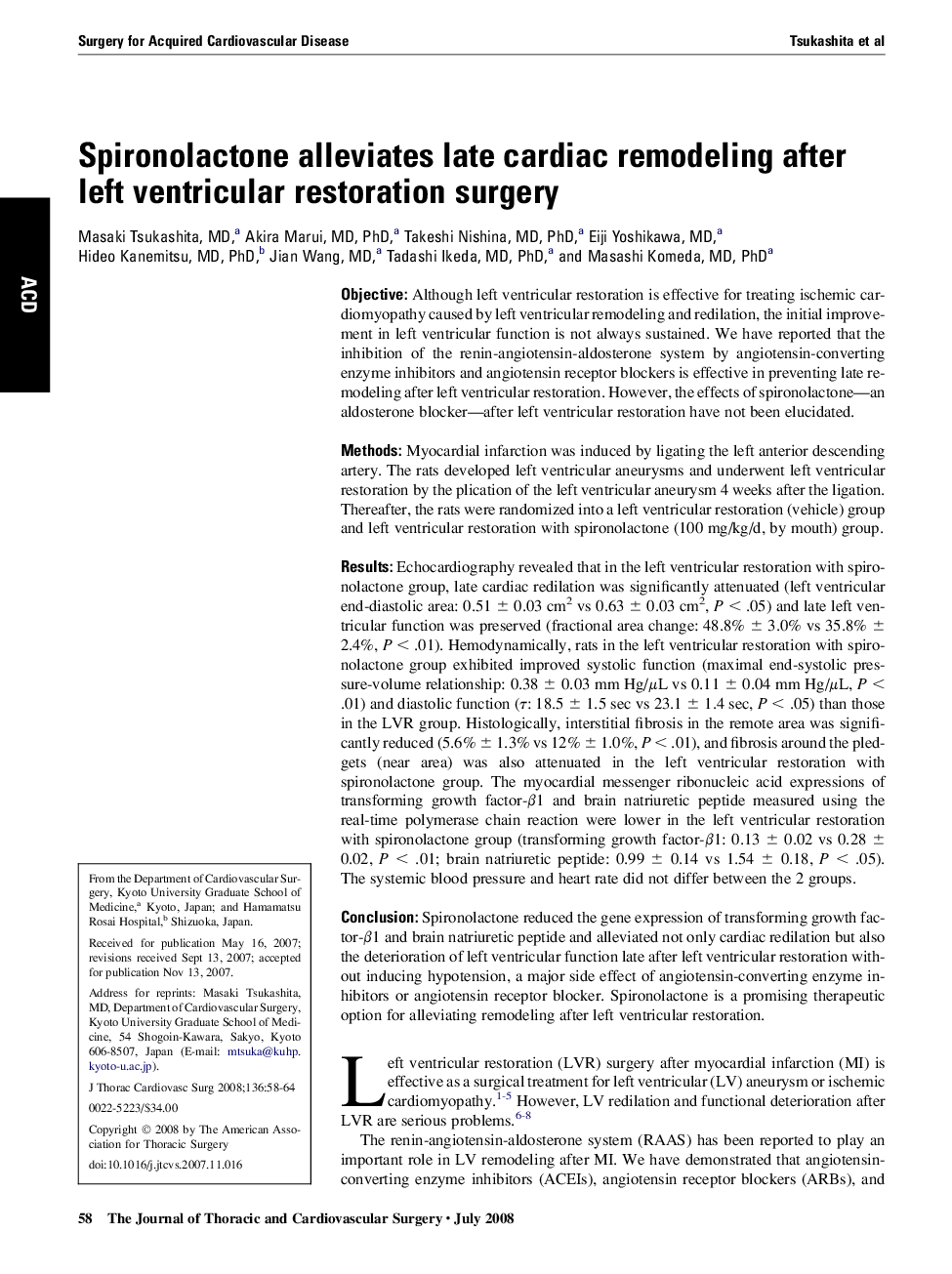| Article ID | Journal | Published Year | Pages | File Type |
|---|---|---|---|---|
| 2986161 | The Journal of Thoracic and Cardiovascular Surgery | 2008 | 7 Pages |
ObjectiveAlthough left ventricular restoration is effective for treating ischemic cardiomyopathy caused by left ventricular remodeling and redilation, the initial improvement in left ventricular function is not always sustained. We have reported that the inhibition of the renin-angiotensin-aldosterone system by angiotensin-converting enzyme inhibitors and angiotensin receptor blockers is effective in preventing late remodeling after left ventricular restoration. However, the effects of spironolactone—an aldosterone blocker—after left ventricular restoration have not been elucidated.MethodsMyocardial infarction was induced by ligating the left anterior descending artery. The rats developed left ventricular aneurysms and underwent left ventricular restoration by the plication of the left ventricular aneurysm 4 weeks after the ligation. Thereafter, the rats were randomized into a left ventricular restoration (vehicle) group and left ventricular restoration with spironolactone (100 mg/kg/d, by mouth) group.ResultsEchocardiography revealed that in the left ventricular restoration with spironolactone group, late cardiac redilation was significantly attenuated (left ventricular end-diastolic area: 0.51 ± 0.03 cm2 vs 0.63 ± 0.03 cm2, P < .05) and late left ventricular function was preserved (fractional area change: 48.8% ± 3.0% vs 35.8% ± 2.4%, P < .01). Hemodynamically, rats in the left ventricular restoration with spironolactone group exhibited improved systolic function (maximal end-systolic pressure-volume relationship: 0.38 ± 0.03 mm Hg/μL vs 0.11 ± 0.04 mm Hg/μL, P < .01) and diastolic function (τ: 18.5 ± 1.5 sec vs 23.1 ± 1.4 sec, P < .05) than those in the LVR group. Histologically, interstitial fibrosis in the remote area was significantly reduced (5.6% ± 1.3% vs 12% ± 1.0%, P < .01), and fibrosis around the pledgets (near area) was also attenuated in the left ventricular restoration with spironolactone group. The myocardial messenger ribonucleic acid expressions of transforming growth factor-β1 and brain natriuretic peptide measured using the real-time polymerase chain reaction were lower in the left ventricular restoration with spironolactone group (transforming growth factor-β1: 0.13 ± 0.02 vs 0.28 ± 0.02, P < .01; brain natriuretic peptide: 0.99 ± 0.14 vs 1.54 ± 0.18, P < .05). The systemic blood pressure and heart rate did not differ between the 2 groups.ConclusionSpironolactone reduced the gene expression of transforming growth factor-β1 and brain natriuretic peptide and alleviated not only cardiac redilation but also the deterioration of left ventricular function late after left ventricular restoration without inducing hypotension, a major side effect of angiotensin-converting enzyme inhibitors or angiotensin receptor blocker. Spironolactone is a promising therapeutic option for alleviating remodeling after left ventricular restoration.
